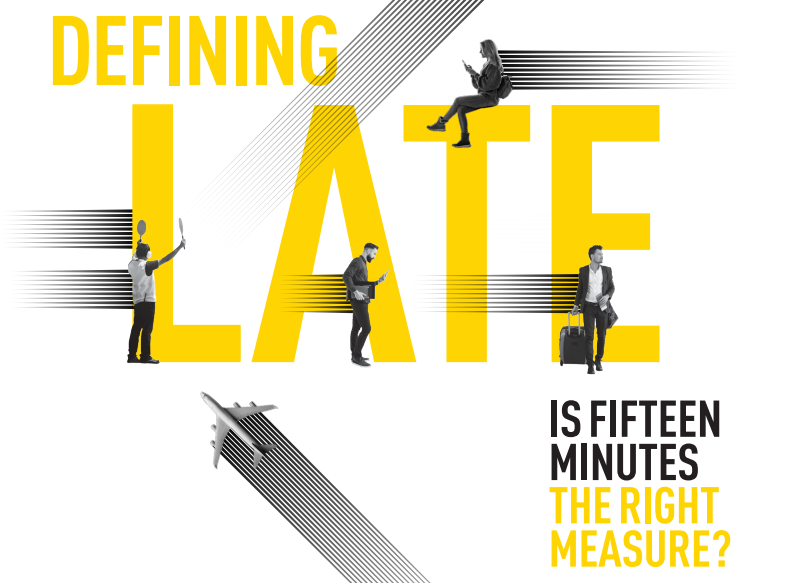But, whatever the price and however convenient a flight is, reliability is a crucial factor in the equation for those premium passengers that crucially boost airline yields. Flight punctuality is the one factor that can truly break the corporate traveller. But, the way punctuality is measured means that a flight could depart or arrive up to 15 minutes behind schedule and still be classified as on time.
Intelligence specialist OAG, which is famous for its flight schedules and regular rankings of aircraft on-time performance reveals that while making use of a defining time is used in many transport sectors as a way of monitoring and reporting on punctuality, the 15 minute window is not actually an industry standard.
"It hasn't been determined by a committee at ICAO, IAA or ACI but for many of us it feels about right," says OAG. "But is it?" OAG questions as it investigates if it time to consider whether the industry does, indeed, need a formalised definition of what constitutes 'late' and, if so, should it be 15 minutes?
The 'Defining Late: Is fifteen minutes the right measure?' report highlights how the profile of on-time performance has risen in recent years. "With the pubic and within airports and airlines, punctuality has moved a long way from the days when it was simply an operational measure used by ground staff to keep an eye on performance," it says. Today, it has become a regularly touted figure (if you are among those topping the charts), but for all it's a key performance indicator (KPI) and industry benchmark.
But, it isn't an exact science as airlines take different approaches to flight scheduling. This could be due to the type of operation they offer - point-to-point or hub-and-spoke - even the individual airports they serve. Some airlines artificially inflate the time it takes to fly from point A to point B to maintain the integrity of their schedules with Ryanair one example of this.
As OAG highlights, two airlines may operate with different elapsed times for the same flight and as a consequence one may be classed as late and the other as on-time even if they took off and landed simultaneously.
Such schedules are especially important when it comes to flight connections and for corporate traveller well-being. Arriving late at a destination and missing that key meeting, even losing a day due to a missed connection can have a profound effect on businesses and those staff on the road - and we know the growing importance of staff welfare and the impact of travel on the mental health of travellers. As OAG acknowledges, missed connections, and bags which miss connections, "cause genuine frustration and stress for passengers as well as costs for airlines".
So what is the answer? Well, OAG believes a move to a longer standard for punctuality - perhaps 30 minutes - "may feel appropriate," but it notes that should we be "messing with a system that seems to work for now".
It suggests that 30 minutes "makes more sense," is a manageable delay for most travellers and is certainly "more realistic" in an operating environment where so many factors which contribute to delays lie outside the control of an airline.
There is also a suggestion that we could consider different measures of on-time for long and short-haul flights, but that raises more questions than gives answers, especially around which should have the more stringent performance standard. Perhaps we should "only care about the first morning wave" of departures, questions OAG, given that a late start to the day would adversely impact all subsequent departures and arrivals.
Is it really time for us to rethink the 15 minute late measure? OAG acknowledges "the status quo is comfortable for many," and the use of 15 minutes to classify a flight as 'late' is "widely accepted and used for benchmarking".
This single measure is simple but leaves the question: is there any merit in thinking about a more sophisticated approach to punctuality, or would that be too difficult, and confuse the customer? It would seem there is a clear need for more research as to what passengers consider acceptable and also garner a better understanding of how passengers perceive delays before we attempt to fix something that isn't actually broken.
